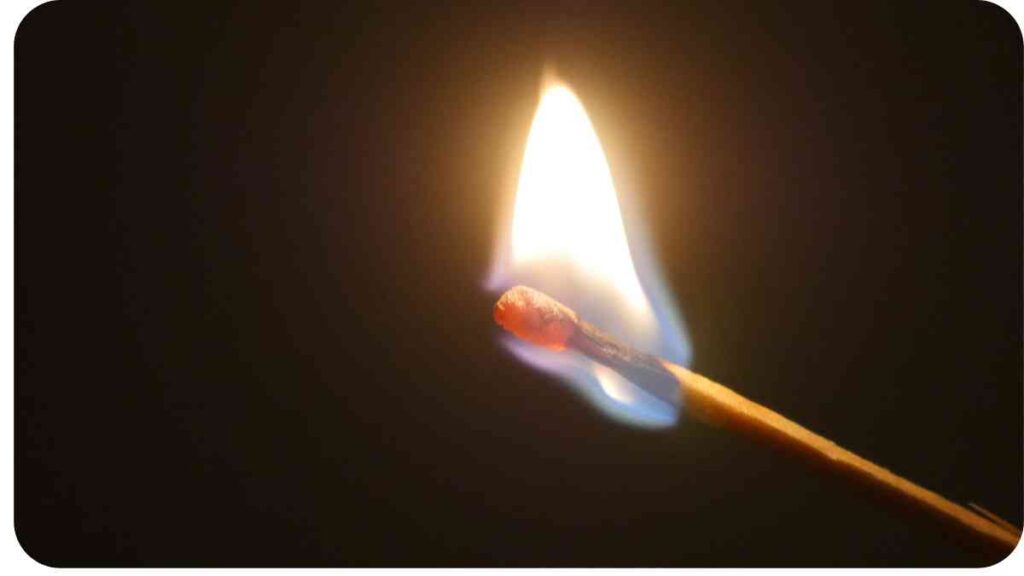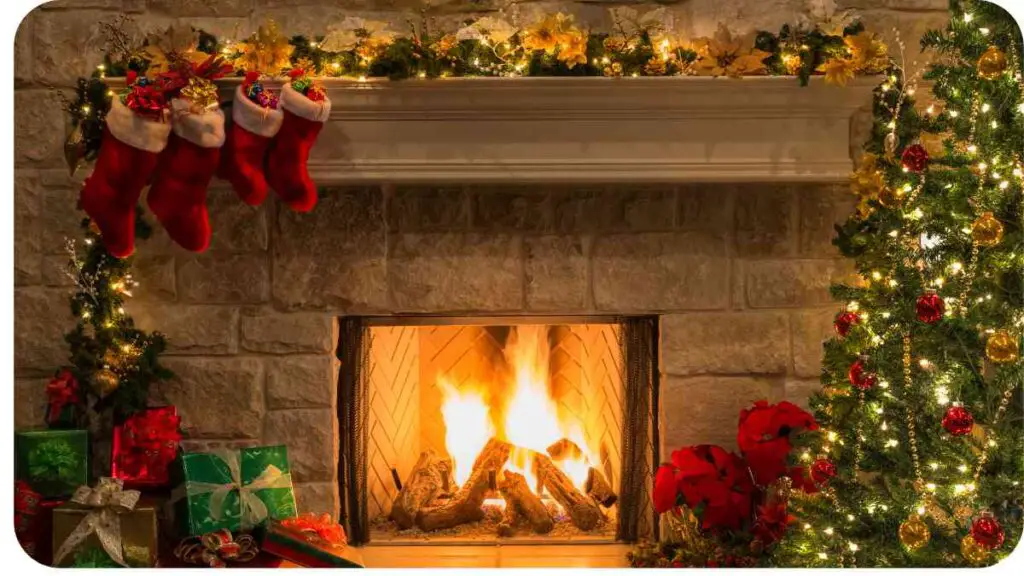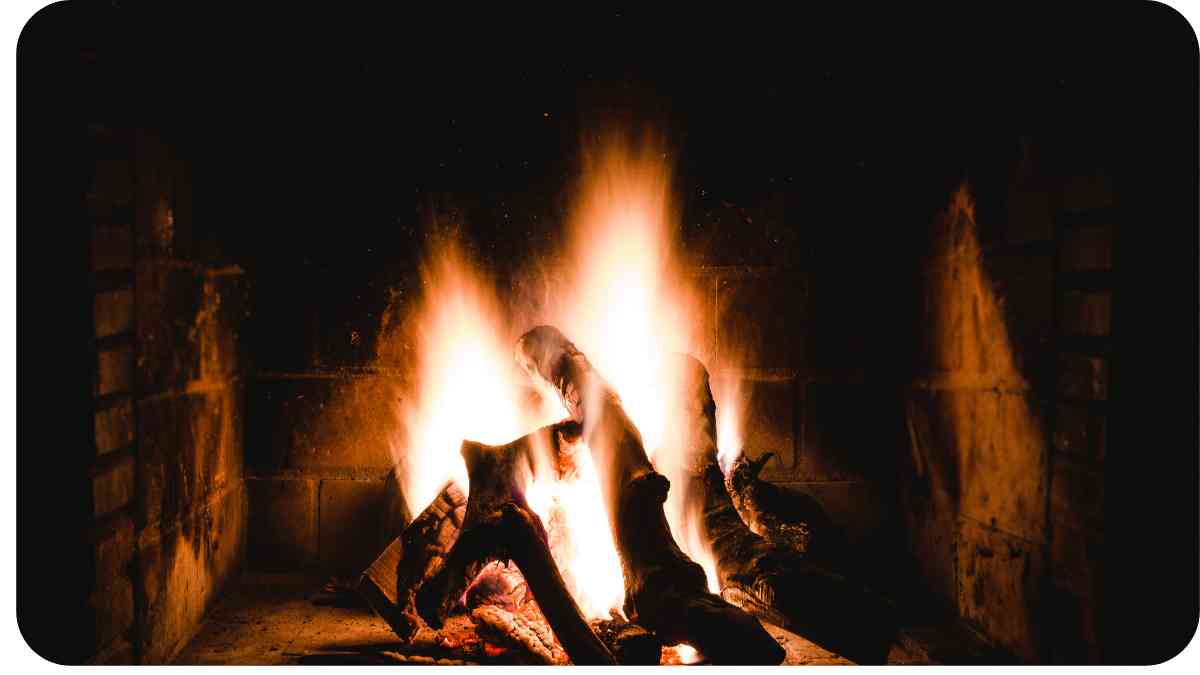Welcome to the world of firelighting, where the flickering flames and comforting warmth of a well-lit fire create unforgettable memories. But what happens when your fire won’t light, leaving you in the cold? In this article, we’ll explore common mistakes people make when attempting to light a fire and provide expert solutions to ensure your fires roar to life.
| Takeaways |
| 1. Properly seasoned firewood is essential for successful fire-lighting. |
| 2. Ensure proper airflow to maintain a steady flame. |
| 3. Quality fire starters can make a significant difference in your fire-lighting experience. |
| 4. Safety precautions are non-negotiable when dealing with fires. |
| 5. Practice and experience are crucial for becoming a proficient fire-lighter. |
| 6. Consider joining fire-lighting communities to expand your knowledge. |
| 7. Troubleshoot common issues like inadequate kindling and excessive smoke. |
| 8. Choose the right tools and materials based on your fire-lighting needs and preferences. |
| 9. Understand the characteristics of different types of firewood. |
| 10. Selecting between a fire pit and a fireplace depends on your space and atmosphere preferences. |
2. The Importance of a Well-Lit Fire
Before we dive into the common mistakes and solutions, let’s briefly touch on why having a well-lit fire matters. Beyond its practical applications for heating and cooking, fire has an innate ability to draw people together, fostering a sense of community and comfort.
When you can reliably light a fire, you’re not only ensuring warmth but also creating a space for bonding, storytelling, and relaxation. Now, let’s tackle those common mistakes that can snuff out the magic.
When you’re in the wilderness, understanding wilderness shelter construction is vital. This guide provides step-by-step instructions to keep you warm and safe.
3. Common Mistakes When Lighting a Fire

3.1. Using Wet Firewood
One of the biggest blunders is attempting to ignite wet firewood. Wet wood not only makes lighting a fire nearly impossible but also produces excessive smoke and creosote buildup in your chimney. Choose seasoned, dry firewood for an easier ignition.
3.2. Insufficient Airflow
Without enough oxygen, your fire won’t have the fuel it needs to burn brightly. Ensure proper airflow by opening dampers and vents and using the right firewood arrangement.
3.3. Poor Firewood Placement
How you stack your firewood matters. A haphazard pile can block airflow and hinder ignition. We’ll discuss the ideal stacking methods in the “Arranging Firewood Effectively” section.
In the great outdoors, successful camping often relies on clever tricks and camping hacks. Discover tips to enhance your experience.
3.4. Neglecting Firestarter Materials
Fire starters are essential for getting your fire going. Overlooking their importance can lead to frustrating fire-lighting experiences. Invest in reliable fire starters for consistent success.
3.5. Ignoring Safety Precautions
Lastly, safety should always be a priority. Ignoring precautions can result in accidents. We’ll delve into safety tips later in this article.
Here’s a comparison of popular fire starters to help you choose the right one for your needs:
These fire starters can make a significant difference in your fire-lighting success. Now, let’s move on to the solutions to these common mistakes.
4. Solutions to Ensure Your Fire Lights Successfully
4.1. Choosing the Right Firewood
Selecting dry, seasoned firewood is paramount. It ensures a faster ignition and reduces smoke production. Look for wood with a moisture content below 20%. Hardwoods like oak and maple are excellent choices.
Ensuring your water source is clean is as crucial as igniting a fire. Learn water purification methods to stay healthy in any situation.
4.2. Creating Proper Airflow
Adequate airflow is the lifeblood of a successful fire. Open dampers and vents to allow oxygen in, and consider using a fire pit or grate to elevate your firewood, improving circulation.
4.3. Arranging Firewood Effectively
The way you stack your firewood can make a world of difference. Use the “log cabin” or “teepee” method to promote airflow, making ignition easier.
4.4. Using Quality Firestarters
Invest in reliable fire starters. They come in various forms, including cubes, sticks, and gels. Refer to the table above for a comparison of popular brands.
4.5. Safety First: Essential Tips
Safety should always be your top priority. Keep a fire extinguisher handy, maintain a safe distance from the fire, and never leave it unattended.
Avoiding navigation blunders is essential to wilderness survival. Discover the top 10 navigation mistakes and how to steer clear of them
5. Personal Experience and Expertise
As someone deeply passionate about firelighting, I’ve had my fair share of challenges and successes. These experiences have shaped my expertise, and I’m excited to share them with you throughout this article.
My journey has taught me that lighting a fire is not just about survival but about creating moments of warmth and connection. I’ve learned from my mistakes and honed my skills to ensure that every fire I light becomes a source of comfort and joy.
6. Tips for an Exceptional Fire-Lighting Experience

Creating a memorable fire-lighting experience is an art. Here are some tips to elevate your skills and ensure every fire you light is exceptional:
- Start with the right tools: Gather all your fire-lighting tools, including firewood, fire starters, matches, or a lighter, before you begin. Being prepared saves time and frustration.
- Kindling matters: Small, dry sticks, and twigs are essential for creating a solid base for your fire. Have them ready to go before lighting the larger logs.
- Mind the weather: Windy conditions can make lighting a fire challenging. Consider windbreaks or shields to protect your fire from gusts.
- Practice fire safety: Always have a designated fire safety area. Clear away flammable materials, and make sure you have a fire ring or designated fireplace.
7. Common Fire-Lighting Tools
To enhance your understanding of fire-lighting, let’s take a closer look at some common tools and materials that can aid you in your quest for the perfect fire.
Facing a grizzly is no joke. Be prepared with knowledge on surviving a bear attack and ensuring your fire can protect you.
7. Fire Starters Comparison
Here’s a more detailed comparison of the fire starters mentioned earlier:
7.1. Firewood Types and Their Characteristics
Different types of wood have unique burning characteristics. Here’s a quick overview:
- Hardwoods: Dense and slow-burning. Examples include oak, maple, and hickory.
- Softwoods: Lighter and faster-burning. Examples include pine and cedar.
Understanding these distinctions can help you select the ideal firewood for your needs.
7.2. Fire-Pit or Fireplace: Which is Better?
The choice between a fire pit and a fireplace depends on your preferences and space. Fire pits offer a communal, open-air experience, while fireplaces provide more controlled, indoor warmth. Consider your setting and the atmosphere you want to create when deciding.
Let’s take a closer look at the advantages and disadvantages of fire pits and fireplaces:
| Aspect | Fire Pit | Fireplace |
| Atmosphere | Open, communal, and social atmosphere | Cozy, intimate, and controlled environment |
| Versatility | Portable and can be moved around | Fixed location and typically indoors |
| Safety | More exposed to wind and weather | Sheltered from the elements, safer indoors |
| Cooking | Ideal for grilling and cooking outdoors | Limited cooking options, primarily heating |
| Maintenance | Generally low maintenance | May require regular chimney cleaning |
Choose the one that aligns with your preferences and the ambiance you want to create in your outdoor or indoor space.
8. Troubleshooting: When All Else Fails
Despite your best efforts, there may be times when your fire just won’t cooperate. Let’s explore some common issues and how to troubleshoot them.
8.1. Fire Won’t Stay Lit
If your fire keeps going out, it might be due to insufficient kindling or poor airflow. Ensure you have enough small sticks and twigs to sustain the fire, and double-check your airflow settings.
8.2. Smoke Issues
Excessive smoke can be caused by wet wood, poor airflow, or an improperly designed fire pit or fireplace. Address these issues accordingly, and consider using seasoned firewood.
8.3. Excessive Creosote Buildup
Creosote buildup in your chimney can be dangerous. It’s often caused by burning unseasoned wood. Regular chimney cleaning is essential to prevent this problem.
9. Enhancing Your Fire-Lighting Skills
9.1. Practice Makes Perfect
Becoming a proficient fire-lighter takes practice. Experiment with different fire-starting techniques and wood types to discover what works best for you.
9.2. Joining Fire-Lighting Communities
Connect with fellow fire enthusiasts to exchange tips, tricks, and stories. Online forums and local clubs can be valuable resources for expanding your knowledge.
In conclusion, lighting a fire is both a practical skill and an art form. With the right knowledge, tools, and a dash of personal experience, you can become a master at creating memorable fires. So, go ahead, light that fire, and let it warm not only your surroundings but also your soul.
10. Conclusion
In this comprehensive guide, we’ve explored the common mistakes that can hinder your fire-lighting endeavors and provided expert solutions to ensure your fires ignite effortlessly. From choosing the right firewood to troubleshooting common issues, you now have the knowledge to transform your fire-lighting experiences into moments of warmth, connection, and joy.
Remember, fire-lighting is as much about practice as it is about knowledge. Embrace the process, learn from your experiences, and soon you’ll be the go-to fire-lighting expert among your friends and family.
Further Reading
Here are some additional resources to expand your knowledge on fire-related topics:
- How to Fix a Gas Fireplace That Won’t Light
Explore practical solutions for troubleshooting and fixing gas fireplace ignition issues. - Common Mistakes When Lighting a Fire
Learn about the most common mistakes people make when lighting fires and how to avoid them, as featured in Mother Earth News. - The Top 6 Causes of Electrical Fires and How to Prevent Them
Gain insights into electrical fire hazards and discover effective prevention measures to keep your home safe.
FAQs
Q: What are the main reasons my gas fireplace won’t light?
A: Gas fireplace ignition issues can be caused by various factors, including a pilot light problem, gas supply issues, or a faulty ignition system. Consult your fireplace’s manual for troubleshooting steps.
Q: How can I avoid common mistakes when lighting a fire in my fireplace or fire pit?
A: To prevent common mistakes, ensure your firewood is dry and seasoned, create proper airflow, use quality fire starters, and follow safety guidelines.
Q: What are the primary causes of electrical fires, and how can I prevent them in my home?
A: Electrical fires can result from overloaded circuits, faulty wiring, damaged appliances, or old electrical systems. To prevent them, regularly inspect your electrical system, avoid overloading circuits, and replace damaged cords or outlets promptly.
Q: Should I attempt to fix a gas fireplace that won’t light myself, or should I call a professional?
A: If you’re unsure about gas fireplace repairs, it’s safer to call a certified technician. Gas-related issues can be dangerous if mishandled.
Q: What are some signs that my electrical system may be at risk of causing a fire?
A: Warning signs of electrical problems include flickering lights, circuit breakers frequently tripping, burning odors, and sparking outlets. If you notice any of these signs, have your electrical system inspected immediately by a qualified electrician.

Hi! I’m Hellen James, and I am the founder of Unified Survival. I have a deep passion for the wilderness and everything that goes along with it. I’ve been hiking since I was a child, and I grew up camping in state parks all over the country. But it wasn’t until recently that I learned how to survive in the wilderness.

